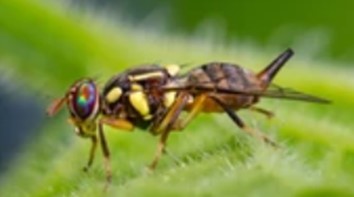Gene Editing in Dacus Dorsalis

Dacus dorsalis is a species of tephritid fruit fly that is endemic to Southeast Asia. It is one of the major pest species in the genus Bactrocera with a broad host range of cultivated and wild fruits. Dacus dorsalis is not only a highly invasive species, but also very destructive to crop yield for farmers of various fruits, vegetables, and nuts across the world. The larval stage of the life cycle is the most damaging to fruits because of larval feeding on the soft flesh of fruits. Male dacus dorsalis respond strongly to methyl eugenol, which is used to monitor and estimate populations, as well as to annihilate males as a form of pest control.
Our Services for Gene Editing in Dacus Dorsalis
Although several control methods are available to control dacus dorsalis, they are not effective in reducing the yield of fruit trees. Lifeasible provides gene editing services for dacus dorsalis with zinc-finger nucleases (ZFNs), transcription activator-like effector nucleases (TALEN) and CRISPR/Cas9 to control this organism.
| Editable genes |
Relevant traits exhibited after editing |
| PSMB3 |
- We can edit the PSMB3 gene in adult dacus dorsalis females to reduce ecdysteroid biosynthesis in the ovary, resulting in blocked yolk deposition, inhibition of ovarian development, and a significant decrease in egg production.
|
| BdNub |
- We can knockdown or knockout the BdNub gene causing changes in the expression of antimicrobial peptide genes in dacus dorsalis, which in turn lead to changes in the structure of the intestinal microbial community and regulate the homeostasis of the intestinal microbial community.
|
| Bdyof |
- We canedit Bdyof to regulate spermatozoa and sperm development, and cause oligospermia in dacus dorsalis males, which in turn affects male reproductive development in dacus dorsalis.
|
| ABCGs |
- We can edit the BdABCG1/2/6/7/10/11/12 genes to interrupt these important processes of metamorphosis development, and detoxification metabolism.
- We can edit the BdABCG1 and BdABCG8 affecting the embryonic development.
- We can edit the BdABCG6 gene interfering its function in the response of dacus dorsalis to adversity stress.
|
| spermless |
- We can knockout the spermless resulted in impaired spermatophore development and a significant reduction in sperm activity and sperm count in dacus dorsalis.
|
Advantages
- Editing reproduction-related genes to control the production or development of the sperm or eggs, and thus the birth rate of larvae.
- Editing embryo development-related genes to control embryo development in dacus dorsalis.
- Knocking out some genes to reduce the metabolic activity of detoxifying substances in dacus dorsalis and increase the susceptibility of dacus dorsalis to drug resistance, thus making such insects killable by pesticides.
- Edit certain growth and development-related genes, and thereby control the growth and development process of dacus dorsalis.
Lifeasible offers gene edit services for dacus dorsalis by three means include ZFNs, TALEN and CRISPR/Cas9 to affecting the development and reproduction of dacus dorsalis to control this pest. If you are interested in our services or if you have any questions, please click online inquiry for more detailed information.
Reference
- Metcalf, R.L.; et al. Olfactory receptors in the melon fly Dacus cucurbitae and the oriental fruit fly Dacus dorsalis. Proc Natl Acad Sci U S A, 1983, 80(11): 3143-7.
For research or industrial raw materials, not for personal medical use!
